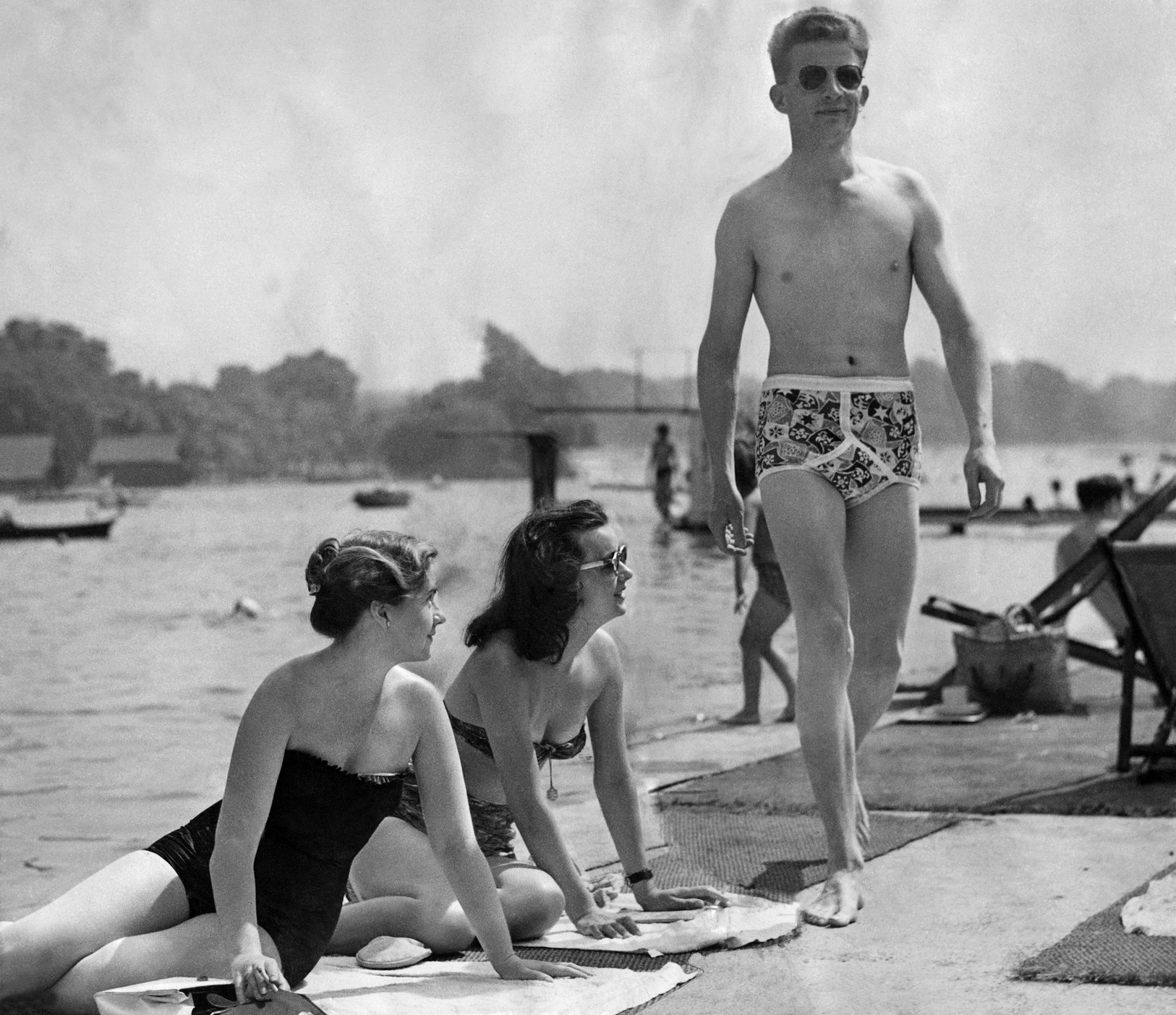
The New Yorker
Science Has Resolved the Question of Boxers vs. Briefs
By Alan Burdick
In 1925, boxer shorts were unleashed on the world: loose-fitting underwear for men, featuring an elastic waistband inspired by the shorts worn by boxers. It was underwear for the inner pugilist. Just ten years later, briefs—jockey shorts, tighty-whities—entered the ring, offering a different vision of masculinity, both sleeker and more self-conscious. Since then, all manner of hybrids and contenders have emerged, from G-strings and banana slings to boxer briefs and tighty-non-whities. But the mavens of under-fashion still mostly align along the original poles: boxers versus briefs; feral versus domestic; low-rider comfort versus high-ball style.
In recent years, that divide has gained an existential edge, with various studies suggesting that wearing tight-fitting underwear may be bad for the underwearer. Semen worsens in quality when exposed to higher-than-normal temperatures for too long. Could tighty-whities be a threat to humankind? This week, a team of researchers at Harvard published the largest and most definitive study of the subject to date, and the findings are compelling. “Men who wore non-boxers”—that is, briefs and their confining kin—“have significantly lower concentrations of sperm and lower sperm counts,” Jorge Chavarro, a fertility researcher at the Harvard T. H. Chan School of Public Health and a member of the research team, told me. “It’s a numbers issue.”
The threat ties back to evolutionary biology. The scrotum—the dangling container for the testes, the organs that produce sperm—is an odd anatomical feature, and one found only in mammals. Carrying the seeds of the species in an external sack invites all sorts of obvious risks, yet all but a few mammals do so. (Count the whale and the elephant among the scrotumless.) What’s the advantage? Temperature may be one: mammals are warm-blooded, and sperm in a scrotum can be kept slightly cooler than the rest of the body. It’s like keeping wine in a cellar instead of on the kitchen counter.
A few decades ago, medical researchers began to notice that some men with fertility problems worked jobs that regularly exposed them to high temperatures. A study from 1992 found that otherwise healthy ceramic-oven operators were twice as likely to have difficulty fathering children than their colleagues who worked in shipping. In another study, French bakers were much slower to impregnate their partners than men in a low-heat control group. Merely sitting for long periods could heat the package to seemingly dangerous levels—taxi and truck drivers have been found to account for a disproportionately high number of men with fertility problems—and the terms “scrotal heating” and “scrotal hyperthermia” entered the scientific literature.
In response, fertility experts explored the possibilities of “testicular cooling.” In “Scrotal Hypothermia and the Infertile Man,” a paper published in The Journal of Urology, in 1984, scientists tested the efficacy of “ice packs applied to the scrotum at night and held in place with jockey shorts.” (Sixty-five per cent of the subjects saw a twofold increase in sperm concentrations.) That same year, a separate team of researchers experimented with a “testicular hypothermia device (THD)”—a jockstrap with tubes that pumped a cool liquid around the genitals. (“Improvements in semen have occurred in as little as six weeks of wearing, but it is more common that periods exceeding twelve weeks are needed,” the authors noted.) A more recent invention, described in the International Journal of Andrology, used cool air instead of liquid.
By the nineteen-nineties, researchers began to fret about underwear. A study from 1990 followed two groups of men for several months: one group wore tight underwear and then, partway through the study period, switched to boxers; the other started out in boxers and later switched to briefs. All saw their semen parameters drop off in tight conditions. A similar study, conducted several years later, by different researchers, reached the same conclusion. But the results weren’t uniformly damning. A study from 1998 in The Journal of Urology, “Are Boxer Shorts Really Better? A Critical Analysis of the Role of Underwear Type in Male Subfertility,” concluded that “the hyperthermic effect of brief-style underwear has been exaggerated.”
For the latest study, which appeared in Human Reproduction, researchers drew on data collected from more than six hundred and fifty men who sought treatment for infertility at the Massachusetts General Hospital at some point between 2000 and 2017. The men, who ranged in age from eighteen to fifty-six, provided semen samples that were analyzed for sperm count, concentration, motility, and well-being—“whether the sperm had one head or two, one tail or two, that sort of thing,” Chavarro said. Blood tests measured the levels of hormones involved in the production of sperm. And each man filled out a questionnaire that asked, among other things, what kind of underwear he typically wore. Slightly more than half the men wore boxers; the rest wore briefs, boxer briefs, bikinis, or other tight-fitting underwear.
Chavarro and his colleagues found that men who mostly wore boxers had seventeen per cent more sperm and a twenty-five-per-cent higher concentration of them than men who preferred tight underwear. The two cohorts showed little difference in the activity, morphology, or genetic integrity of their sperm. But, tellingly, men who wore tight underwear had higher levels of follicle-stimulating hormone, which is released by the pituitary gland to boost sperm production. “It’s an indication that the system is trying to compensate,” Chavarro said. “So something’s definitely going on with sperm production.”
The findings took into account numerous factors, including an individual’s age, his body-mass index, whether he smokes, and the fact that underwear trends shifted during the seventeen years of data collection. And, the authors were careful to note, other unreported factors could have come into play, such as the types of pants the men wore or the truthfulness of their responses. Chavarro said that, although tight-fitting underwear clearly reduces sperm production, it probably doesn’t reduce the over-all fertility of the average tight-underwear wearer. Even the reduced semen measurements were well within the normal range. Where the difference might matter is among men whose sperm numbers are low to begin with; wearing briefs might push them below the range of viability. Wearing boxers “probably isn’t helping most men, but it probably is helping some men,” Chavarro said. “And since most men have no idea what their sperm count is, if you’re trying for a baby, it’s not such a bad idea.”
Chavarro did not specify what kind of underwear he himself wears, except by omission. “I don’t like boxers,” he said. “But I’m done having babies. If I’d done this research twelve or thirteen years ago, when my wife and I were trying, I might have decided to wear boxers. But I’m out of that business.”




